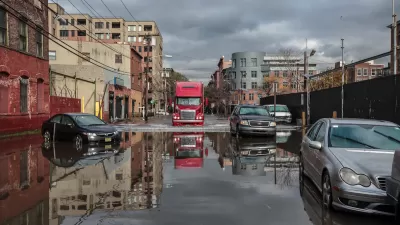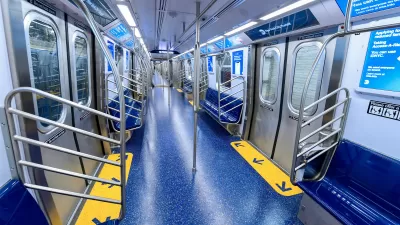NYU has announced its intention to reduce the proposed square footage for their controversial Greenwich Village expansion plan by approximately twenty percent.
New York University's contentious plan for campus expansion in the village will be reduced from 2.3 million square feet to just under 2 million square feet. The plan adds new dorms, classrooms, and commercial space to the two superblocks surrounding Washington Square Park. The university currently owns and operates 7 buildings surrounding the landmark park.
As one of the top 5 employers in New York City, NYU has its share of proponents. However the Greenwhich Village Historic Preservation Society, neighborhood activists, and the community board have all been vocal dissenters against the plan. Opponents argue that NYU's proposed towers are out of scale with the neighborhood's existing building heights and density.
It was for this reason that the Community Board unanimously rejected NYU's initial development plan despite strong support from Mr. Stringer, the Manhattan Borough President who recommended approval to the City Planning Commission on Wednesday. Although NYU's square footage reduction may seem like a compromise, some have argued that NYU overpitched their square footage to have room to negotiate to their ideal range.
Thanks to Elaine Mahoney
FULL STORY: N.Y.U. Agrees to Scale Back Its Expansion in the Village

Study: Maui’s Plan to Convert Vacation Rentals to Long-Term Housing Could Cause Nearly $1 Billion Economic Loss
The plan would reduce visitor accommodation by 25,% resulting in 1,900 jobs lost.

North Texas Transit Leaders Tout Benefits of TOD for Growing Region
At a summit focused on transit-oriented development, policymakers discussed how North Texas’ expanded light rail system can serve as a tool for economic growth.

Why Should We Subsidize Public Transportation?
Many public transit agencies face financial stress due to rising costs, declining fare revenue, and declining subsidies. Transit advocates must provide a strong business case for increasing public transit funding.

How to Make US Trains Faster
Changes to boarding platforms and a switch to electric trains could improve U.S. passenger rail service without the added cost of high-speed rail.

Columbia’s Revitalized ‘Loop’ Is a Hub for Local Entrepreneurs
A focus on small businesses is helping a commercial corridor in Columbia, Missouri thrive.

Invasive Insect Threatens Minnesota’s Ash Forests
The Emerald Ash Borer is a rapidly spreading invasive pest threatening Minnesota’s ash trees, and homeowners are encouraged to plant diverse replacement species, avoid moving ash firewood, and monitor for signs of infestation.
Urban Design for Planners 1: Software Tools
This six-course series explores essential urban design concepts using open source software and equips planners with the tools they need to participate fully in the urban design process.
Planning for Universal Design
Learn the tools for implementing Universal Design in planning regulations.
City of Santa Clarita
Ascent Environmental
Institute for Housing and Urban Development Studies (IHS)
City of Grandview
Harvard GSD Executive Education
Toledo-Lucas County Plan Commissions
Salt Lake City
NYU Wagner Graduate School of Public Service





























